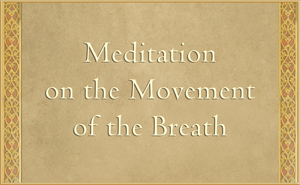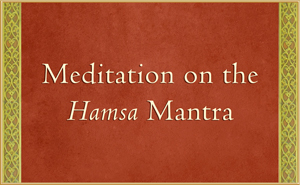Meditating on the Breath:
Dharanas from the Vijnanabhairava
Introduction by Swami Shantananda
The Vijnanabhairava, one of the Sanskrit scriptures revered by the sages of Kashmir Shaivism, consists of 112 dharanas, or centering techniques. The dharanas below describe ways to focus one’s attention on the breath for meditation.
The central approach given is to pay attention to the inward and outward movements of the breath and, finally, to the pause that naturally occurs between these. Exhalation (prana) originates from the “heart,” hrdaya, a subtle space of Consciousness at the center of the chest. The out-breath moves in an arc, first upward within the body and, once it leaves the body, downward until pausing briefly at a space parallel to the heart, a space of Consciousness known as the external heart. Inhalation (apana) originates from this same space outside the body and moves upward and then, once it enters the body, downward and back into the internal heart, where it pauses.
As the breath moves in and out of the body, it makes sounds—ham on the in-breath and sa on the out-breath. These two sounds form the syllables of what is called the natural mantra, identified as Hamsa (I am That) or So’ham (That I am). Thus, as the breath moves in and out of the body, it spontaneously repeats this natural mantra.
The Supreme Self—indicated as “That”—reveals its presence at the spaces where the breath pauses within the body and outside the body, both of which are essentially one Consciousness. Experiencing this pause, where prana and apana have merged at the heart, the meditator comes to a state of perfect stillness.





